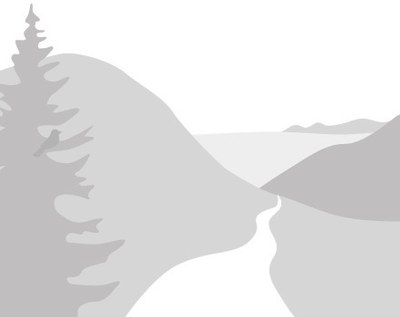
Trip Report
Mount Stuart/West Ridge
- Tue, Aug 19, 2014
- Mount Stuart/West Ridge
- Climbing
This was a fun climb. I recommend that it only be done by parties which are comfortable climbing un-roped on exposed “class 4” climbing, travel light, and are in good physical condition.
The times listed by the Mountaineers were what we experienced. However, it seemed more like 5.6 than 5.4, and some of the class 4 un-roped climbing was just as hard as the roped class 5 climbing. We did not rope up until after the West Ridge Notch (WRN).
On the approach, don’t drop down to Ingalls creek. Continue on the boot path to Stuart Pass. Make sure that you look at the correct approach gulley (2nd) from Ingalls Lake and on the approach to Stuart pass.
We climbed the 2nd approach gulley, which is white granite rock, until it ended at a dark rock headwall. Then we took a class 4 chimney to the right. At the top of this gulley we could see Long John Tower (LJT) and the next gulley. We went just right of the center headwall and made a leftward traverse to the saddle between LJT and the ridge. There were a few tricky class 4 moves, but we didn’t use a rope.
After reaching this saddle, we went down a path for about 100 ft, then scrambled up to another gulley. After about 100 ft of elevation gain, we found the huge, dark, 50ft high hunk of rock, which is the “key” to finding a short tunnel next to it. We made a short down climb into this tunnel, which leads to an obvious boot trail. We followed the trail, which went downward, and required some butt sliding on slabs.
After the boot trail we climbed a chimney which had a huge chockstone in it. Some climbers refer to this as “God’s Cairn”. After we went pass God’s Cairn, we traversed leftwards and found a snowfield, which we named God’s Snowfield, because we were in need of water. We stopped and melted snow and relaxed. After rehydrating, we traversed over to the next obvious gulley which leads to the WRN. We found a bivy site about 20 feet higher and to the right of the WRN which we called home for the night.
The next day we scrambled leftwards on easy class 3 terrain for about 100 feet, then roped up at a flat spot. We traversed over to the north ridge for about 1/4 rope length, and then traversed back right to the ridge crest when the climbing got more difficult, and setup a belay. This pitch was a little less than ½ rope length. The next pitch we climbed up and slightly right until we could see the sandy benches to the right and below us. We down climbed to the benches, and followed the path all the way to the end. This took us to the 5.6 variation. The 5.4 route ( left of 5.6 variation ) didn’t look easier. Two pitches of 5.6 climbing took us to just below the summit, with a rightward trend. There was a fixed piton at a tricky move just near the end.
From the summit, we followed the obvious cairns to the Cascadian Couloir descent route. There were a few snow patches, which we easily avoided since we didn’t’ have ice axes nor crampons. We had to do a little bit of bush whacking for a few hundred vertical feet to get to the Ingalls Creek trail.
There were other parties on the route, some behind us, some that climbed with us, and some that were behind us.
 John Bell
John Bell
 admin
admin